Thingiverse
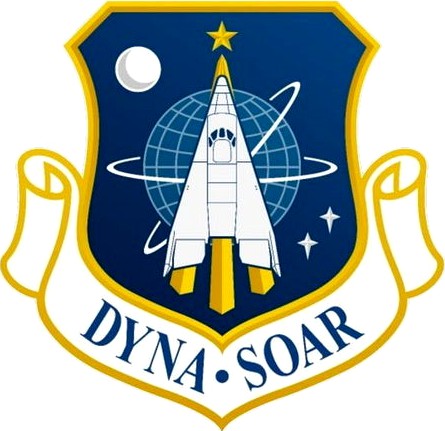
Dyna-Soar with Titan Booster by Austin_Aerospace_Education
by Thingiverse
Last crawled date: 3 years ago
This is a remix utilizing multiple sources including:
Richard Cornford who had created a 1/96 scale Dyna-Soar with the Titan Adapter https://www.thingiverse.com/thing:3174974
Scott Mills who had recreated the parts to build the Estes Titan II https://www.thingiverse.com/thing:2845691
The JimZ web site to download a copy of the original Estes Gemini instructions http://www.spacemodeling.org/jimz/est1978.htm
===========================================================
We had always wanted to build a flying model of the X-20 Dyna-Soar. It is a unique spacecraft that unfortunately was cancelled before it could fly. Since we wanted a flying model it made sense to see if we could build one of the earlier Titan II concept vehicles due to its large fins.
To begin we had a scale 3-view drawing from the original Dyna-Soar/Titan II design by the Martin Company. This led us to find Richard Cornford who had created a 1/96 scale Dyna-Soar with the Titan Adapter. Another modeler by the name of Scott Mills had recreated the parts to build the Out of Production Estes Titan II kit. That then led us to the JimZ web site to download a copy of the original instructions. We found that the Estes model was designed around a BT-60 body tube.
Based on this we had a basic idea of what we would need to create a flying model. Using the BT-60 outer tube dimension and comparing it to the original blueprint, we could begin to create the plans for the Dyna-Soar. This allowed us to create the fins. They were unusual as there are two large fins (which are in line with the wings of the Dyna-Soar) and two smaller fins.
We also had to scale up the Dyna-Soar 3D print, as its original size was too small for the BT-60 body tube. We used the scaling feature in the MatterControl software to upscale the base of the transition to the same diameter as the BT-60. In addition, we needed to add a nose cone shoulder to allow it to stay on the BT-60 body tube and provide a place to attach the parachute and shock cord. Once this was done, we had a basic idea of what our model would look like. The question was would it fly?
To answer that question we created a basic design in OpenRocket. It is not exact as OpenRocket was not able to add the winglets on the Dyna-Soar. However, it should be close enough to determine stability and approximate performance. These initial simulations revealed that the standard 18mm motor used in the Estes Gemini Titan would really be underpowered for this size and weight model. So we adjusted the design to use the large 24mm motors.
Our first print of the Dyna-Soar nose was using a standard setting to make sure it would fit the rocket. We just recently printed a second copy using extra fine settings to get the best print possible. We also reduced the fill from 22% to 10% to help reduce the weight as well as thin the walls and top and bottom (The OpenRocket report shows the performance based on the original print, not the updated print).
We knew we wanted a display stand that would spotlight the model. We combined the display engine nozzles from the Titan file and mounted them on to a display block. During our searches for information on the Dyna-Soar we found a really nice logo/shield. We decided to add that to the display stand in a raised relief pattern. This completed the 3D printing aspect of the build.
The fins were cut from bass wood instead of balsa wood. This should give the model some added strength. As this is a sport scale model we simply rounded the leading and trailing edges of the fins. We glued the fins on using the alignment guide generated in OpenRocket.
There are two sets of conduits, each having two sections. They are located on body tube according to the alignment guide generated in OpenRocket. We used the dimensions given in the Estes Titan instructions to space the conduits the proper distance apart. The conduits are attached using plastic model cement. The launch lugs were cut to size and glued on using wood glue.
The basswood fins received a coat of thinned wood filler and were sanded smooth. The same was done to the spirals on the body tube. The model was then sprayed in sanding primer and sanded smooth.
With the Dyna-Soar nose cone removed, we plan to spray a basecoat of white to the body and fins. The silver areas will be masked off and painted. Using the decal file from the JimZ’s site, we plan to create a set of decals using our ink-jet printer.
We look forward to finishing this model in the near future and updating this project.
Richard Cornford who had created a 1/96 scale Dyna-Soar with the Titan Adapter https://www.thingiverse.com/thing:3174974
Scott Mills who had recreated the parts to build the Estes Titan II https://www.thingiverse.com/thing:2845691
The JimZ web site to download a copy of the original Estes Gemini instructions http://www.spacemodeling.org/jimz/est1978.htm
===========================================================
We had always wanted to build a flying model of the X-20 Dyna-Soar. It is a unique spacecraft that unfortunately was cancelled before it could fly. Since we wanted a flying model it made sense to see if we could build one of the earlier Titan II concept vehicles due to its large fins.
To begin we had a scale 3-view drawing from the original Dyna-Soar/Titan II design by the Martin Company. This led us to find Richard Cornford who had created a 1/96 scale Dyna-Soar with the Titan Adapter. Another modeler by the name of Scott Mills had recreated the parts to build the Out of Production Estes Titan II kit. That then led us to the JimZ web site to download a copy of the original instructions. We found that the Estes model was designed around a BT-60 body tube.
Based on this we had a basic idea of what we would need to create a flying model. Using the BT-60 outer tube dimension and comparing it to the original blueprint, we could begin to create the plans for the Dyna-Soar. This allowed us to create the fins. They were unusual as there are two large fins (which are in line with the wings of the Dyna-Soar) and two smaller fins.
We also had to scale up the Dyna-Soar 3D print, as its original size was too small for the BT-60 body tube. We used the scaling feature in the MatterControl software to upscale the base of the transition to the same diameter as the BT-60. In addition, we needed to add a nose cone shoulder to allow it to stay on the BT-60 body tube and provide a place to attach the parachute and shock cord. Once this was done, we had a basic idea of what our model would look like. The question was would it fly?
To answer that question we created a basic design in OpenRocket. It is not exact as OpenRocket was not able to add the winglets on the Dyna-Soar. However, it should be close enough to determine stability and approximate performance. These initial simulations revealed that the standard 18mm motor used in the Estes Gemini Titan would really be underpowered for this size and weight model. So we adjusted the design to use the large 24mm motors.
Our first print of the Dyna-Soar nose was using a standard setting to make sure it would fit the rocket. We just recently printed a second copy using extra fine settings to get the best print possible. We also reduced the fill from 22% to 10% to help reduce the weight as well as thin the walls and top and bottom (The OpenRocket report shows the performance based on the original print, not the updated print).
We knew we wanted a display stand that would spotlight the model. We combined the display engine nozzles from the Titan file and mounted them on to a display block. During our searches for information on the Dyna-Soar we found a really nice logo/shield. We decided to add that to the display stand in a raised relief pattern. This completed the 3D printing aspect of the build.
The fins were cut from bass wood instead of balsa wood. This should give the model some added strength. As this is a sport scale model we simply rounded the leading and trailing edges of the fins. We glued the fins on using the alignment guide generated in OpenRocket.
There are two sets of conduits, each having two sections. They are located on body tube according to the alignment guide generated in OpenRocket. We used the dimensions given in the Estes Titan instructions to space the conduits the proper distance apart. The conduits are attached using plastic model cement. The launch lugs were cut to size and glued on using wood glue.
The basswood fins received a coat of thinned wood filler and were sanded smooth. The same was done to the spirals on the body tube. The model was then sprayed in sanding primer and sanded smooth.
With the Dyna-Soar nose cone removed, we plan to spray a basecoat of white to the body and fins. The silver areas will be masked off and painted. Using the decal file from the JimZ’s site, we plan to create a set of decals using our ink-jet printer.
We look forward to finishing this model in the near future and updating this project.
Similar models
thingiverse
free

PNC-55EX Nose Cone by JackHydrazine
...ing.org/jimz/est1925.htm
neptunehttp://www.spacemodeling.org/jimz/est1935.htm
rangerhttp://www.spacemodeling.org/jimz/est1955.htm
thingiverse
free

Estes PNC-50S Nose Cone by JackHydrazine
...s above.
sandpiperhttps://plans.rocketshoppe.com/estes/est1389/est1389.htm
aries ssthttp://www.spacemodeling.org/jimz/est1927.htm
thingiverse
free

Estes USS Hyperion (kit# 1383) Fin Can by JackHydrazine
.../www.spacemodeling.org/jimz/est1383.htm
rocksim file can be found here.https://www.rocketreviews.com/estes-uss-hyperion-4449.html
thingiverse
free

Estes BT-60 Model Rocket Body Tube Parts by randalstout
...for bt-60 to bt-5 tube.
estes bt-60 coupler to join two tubes together.
ested bt-60 bulkhead to have a tube be a payload section.
thingiverse
free

Estes BT-60 model rocket accesories by sparkie65
...0 model rocket accesories by sparkie65
thingiverse
this are different model rocket parts for use with the estes bt-60 body tube.
thingiverse
free

Customizable Rocket Fin Alignment Jig by artdavis
...meters (ref: http://www.estesrockets.com/):
inner diameters:
bt-5: 13.2mm
bt-20: 18.0mm
bt-50: 24.1mm
bt-55: 32.6mm
bt-60: 40.5mm
thingiverse
free

Model Rocket Fin Hub (BT50) by The_Red_Yeti
...erse
this is a fin hub that is designed to fit the on the estes model rocket alpha, or any rocket that uses the bt-50 body tube.
thingiverse
free

Model Rocket Fin Hub (BT20) by The_Red_Yeti
...is a fin hub that is designed to fit the on the estes model rocket hi-flier, viking, or any rocket that uses the bt-20 body tube.
thingiverse
free

Estes LTV Scout #1287 Plastic Parts by robnee
... available tubing. download the original plans at: http://www.spacemodeling.org/jimz/est1287.htm
comments would be appreciated
thingiverse
free

Customizable Rocket Nose Cone Coupler by artdavis
...hangelog:
2017-05-07: file creation
2017-06-08: added fillet/chamfer feature to bottom of coupler for easier body tube insertion.
Dyna
3d_export
$99

Toyota Dyna 3D Model
...truck transport container smal japan realistic detailed swb short wheel base open
toyota dyna 3d model fisherman3d 39711 3dexport
turbosquid
$20

Dyna Drive Pedal
... available on turbo squid, the world's leading provider of digital 3d models for visualization, films, television, and games.
3ddd
$1

Dyna St Clair Swivel Chair
...dyna st clair swivel chair
3ddd
swivel
http://www.horchow.com/dyna-st-clair-swivel-chair/cprod109910005/p.prod
3d_export
$20

2009 Toyota Dyna 3D Model
...2008 city low poly lowpoly game realtime cargo traffic race parking refrigerator
2009 toyota dyna 3d model be_fast 29145 3dexport
3d_export
$89

Panhard Dyna Junior X87 3D Model
...tible spider vehicle 3d model 1954 panhard dyna junior x87 old antique
panhard dyna junior x87 3d model desmonster 84023 3dexport
3d_export
$89

Panhard Dyna Junior Coupe 3D Model
... 3d model 1954 1955 panhard dyna junior x87 old antique pichon-parat
panhard dyna junior coupe 3d model desmonster 84209 3dexport
cg_studio
$99

Toyota Dyna Flatbed Truck3d model
...
.3ds .fbx .lwo .max .obj - toyota dyna flatbed truck 3d model, royalty free license available, instant download after purchase.
3d_export
$10

truck toyota dyna dc 1982
...truck toyota dyna dc 1982
3dexport
a vintage truck low poly pbr materials
turbosquid
$160

Harley Davidson Dyna Street Bob 3d model
... harley davidson dyna street bob 3d model for download as skp on turbosquid: 3d models for games, architecture, videos. (1433787)
3d_export
$99

Harley Davidson Sportster Dyna Street Bob 2015 3D Model
...avidson street sportster nacked coffe caffe dyna bob
harley davidson sportster dyna street bob 2015 3d model squir 93937 3dexport
Soar
3d_export
$10

MLP Soaring Dash Print-Ready STL 3D Model
...e-pony
mlp soaring dash print-ready stl 3d model download .c4d .max .obj .fbx .ma .lwo .3ds .3dm .stl uncommented 104525 3dexport
3d_ocean
$9

Low poly balloon
...aerostat air balloon fly low poly low-poly lowpoly polygonal soar balloon in the low poly. the model made in...
3d_export
$20

Lavochkin LA5 3D Model
...aircraft jet attacker fighter bomber transport air bombrun plane soar lavochkin la5 3d model heartbreak 58739...
3d_export
$20

F2 Raven 3D Model
...aircraft jet attacker fighter bomber transport air bombrun plane soar f2 raven 3d model heartbreak 58631...
3d_export
$20

Republic P47 Thunderbolt 3D Model
...aircraft jet attacker fighter bomber transport air bombrun plane soar republic p47 thunderbolt 3d model heartbreak 59904...
3d_export
$20

Spitfire 3D Model
...aircraft jet attacker fighter bomber transport air bombrun plane soar world war worldwar wwii ww ii spitfire 3d model...
3d_export
$20

Mig21 Fishbed 3D Model
...aircraft jet attacker fighter bomber transport air bombrun plane soar stealth mig21 fishbed 3d model heartbreak 58996...
3d_export
$20

Raylord 3D Model
...aircraft jet attacker fighter bomber transport air bombrun plane soar space raylord 3d model heartbreak 55550...
3d_export
$20

Su30 Flanker 3D Model
...aircraft jet attacker fighter bomber transport air bombrun plane soar stealth su30 flanker 3d model heartbreak 58835...
3d_export
$20

Bentus 3D Model
...aircraft jet attacker fighter bomber transport air bombrun plane soar space aerial bentus 3d model heartbreak 55526...
Aerospace
turbosquid
$4

Grasshopper Aerospace L1 Spacecraft
... available on turbo squid, the world's leading provider of digital 3d models for visualization, films, television, and games.
3d_export
$29

ASM226 Dreamslayer IMREC Aerospace Missile 3D Model
...
3dexport
sci-fi missile aerospace weapon imrec rocket
asm226 dreamslayer imrec aerospace missile 3d model psicore 64535 3dexport
cg_studio
$199

Titan Aerospace Solara 503d model
...bj .mb .lwo .fbx .c4d .3ds - titan aerospace solara 50 3d model, royalty free license available, instant download after purchase.
3d_export
$99

Battletech AeroSpace Fighter Pack 3D Model
...ewa confederate corsair gecko essex icicle kirghiz leopard lion
battletech aerospace fighter pack 3d model psicore 64548 3dexport
turbosquid
$100

Bigelow Aerospace B330 Space Habitat
... available on turbo squid, the world's leading provider of digital 3d models for visualization, films, television, and games.
turbosquid
$125

Dubai Aerospace Enterprise 737 MAX 8
...odel dubai aerospace enterprise 737 max 8 for download as max on turbosquid: 3d models for games, architecture, videos. (1678172)
3d_export
$199

Titan Aerospace Solara 50 3D Model
... aviation light
titan aerospace solara 50 3d model download .c4d .max .obj .fbx .ma .lwo .3ds .3dm .stl humster3d 102807 3dexport
cg_studio
$159

GULFSTREAM AEROSPACE GULFSTREAM IV CAAC3d model
...bx .ma .max - gulfstream aerospace gulfstream iv caac 3d model, royalty free license available, instant download after purchase.
humster3d
$150

3D model of Titan Aerospace Solara 50
...ed 3d model of titan aerospace solara 50 in various file formats. all our 3d models were created maximally close to the original.
cg_studio
$159

GULFSTREAM AEROSPACE GULFSTREAM IV Paf3d model
... .lw .ma .max - gulfstream aerospace gulfstream iv paf 3d model, royalty free license available, instant download after purchase.
Booster
turbosquid
$50

BOOSTER PUMP
...squid
royalty free 3d model booster pump for download as max on turbosquid: 3d models for games, architecture, videos. (1259397)
turbosquid
$5

Sound Booster
...quid
royalty free 3d model sound booster for download as stl on turbosquid: 3d models for games, architecture, videos. (1363395)
turbosquid
$20
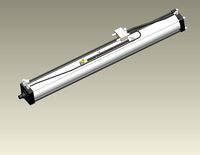
booster pneumatic
... available on turbo squid, the world's leading provider of digital 3d models for visualization, films, television, and games.
turbosquid
$10

Testosterone Booster
... available on turbo squid, the world's leading provider of digital 3d models for visualization, films, television, and games.
turbosquid
$2

Wifi Signal Booster
...yalty free 3d model wifi signal booster for download as blend on turbosquid: 3d models for games, architecture, videos. (1281888)
3d_export
$20

Liquid Booster Rocket 3D Model
...model
3dexport
rocket booster space oxygen fuel capsule shuttle nasa planets
liquid booster rocket 3d model dogmaf 32136 3dexport
3d_export
$15

Brake booster 3D Model
...ic car vehicle abs esp traction drive oil liquid component element pressure caliper
brake booster 3d model fabelar 76257 3dexport
3ddd
$1

Delta Light BOOSTER HP 3050
...: 26 ватт
цоколь: led
ip (степень защиты): ip20
количество ламп: 1 шт
световой эффект: рассеянный свет
polys: 4,202
verts: 4,137
3ddd
$1

Delta Light Booster HIC-50
...мп: 1 шт
световой эффект: направленный свет
материал: металлhttp://www.deltalight.com/pop.html#/products/product/12423/
cg_studio
$199

Jedi Starfighter Eta-2 with Hyperdrive Booster Ring3d model
... - jedi starfighter eta-2 with hyperdrive booster ring 3d model, royalty free license available, instant download after purchase.
Austin
3ddd
$1

Austin
...uesalotti.
выполнено по размерам. текстуры, форматы fbx, obj, присутствуют. ссылка:http://epoquesalotti.com/collezioni/
3ddd
$1

Eichholtz Stool Austin
...йл для 3ds max версии 2014, а так ж формат obj и fbx.
ссылка:http://www.eichholtz.com/stool-austin-0112012250114.aspx
3d_export
free

Austin-Healey 3000 MkIII
...austin-healey 3000 mkiii
3dexport
1965 austin-healey 3000 mkiii
3d_export
free

Austin-Healey Sprite MKI
...austin-healey sprite mki
3dexport
1958 austin-healey sprite mki
cg_studio
$34

Austin ruby3d model
...austin ruby3d model
cgstudio
.max - austin ruby 3d model, royalty free license available, instant download after purchase.
cg_studio
$32

Austin 19293d model
...austin 19293d model
cgstudio
.max - austin 1929 3d model, royalty free license available, instant download after purchase.
3ddd
$1

eichholtz chair austin
...hair austin
3ddd
eichholtz , пуф
stool austin - orange
dimensions
w. 19 x d. 19 x h. 21
cg_studio
$17

Austin 73d model
...austin 73d model
cgstudio
.blend .dae .obj - austin 7 3d model, royalty free license available, instant download after purchase.
turbosquid
$250

Austin Armored Car
...
royalty free 3d model austin armored car for download as fbx on turbosquid: 3d models for games, architecture, videos. (1283344)
turbosquid
$6

Boconcept-austin bed
...oyalty free 3d model boconcept-austin bed for download as max on turbosquid: 3d models for games, architecture, videos. (1542700)
Titan
design_connected
$18

Titan
...titan
designconnected
original btc titan computer generated 3d model.
3d_ocean
$25

RMS Titanic
...rms titanic
3docean
ship steamer titanic
3d model of the rms titanic
turbosquid
$49
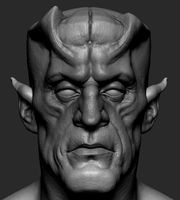
Titan
...quid
royalty free 3d model titan for download as obj and ztl on turbosquid: 3d models for games, architecture, videos. (1314276)
turbosquid
$8

Titan
...d
royalty free 3d model titan for download as , fbx, and obj on turbosquid: 3d models for games, architecture, videos. (1545505)
3d_export
$15

eren yeager titan from attack on titan
...eren yeager titan from attack on titan
3dexport
3d model of eren titan
3d_export
$5

titanic new
...titanic new
3dexport
titanic 3d model normal quality for animation
3d_export
$100

Titan 3D Model
...titan 3d model
3dexport
silo launcher rocket titan
titan 3d model acquarius 37854 3dexport
3d_ocean
$25
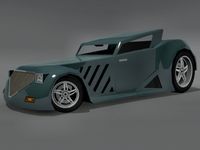
Titan
...nfs nfshs one ps ps1 psone rod speed sports stakes titan transport vehicle
quality exterior and low polygon interior concept car.
3ddd
$1

Titanic Lamp(table)
...titanic lamp(table)
3ddd
titanic lamp(table)
turbosquid
$10
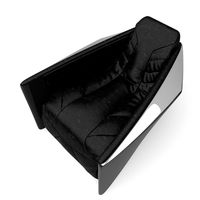
Titan chair
...osquid
royalty free 3d model titan chair for download as max on turbosquid: 3d models for games, architecture, videos. (1301533)
Education
turbosquid
$19

Educational Cubes
...el educational cubes for download as blend, stl, obj, and fbx on turbosquid: 3d models for games, architecture, videos. (1710777)
turbosquid
$59

education centre
... available on turbo squid, the world's leading provider of digital 3d models for visualization, films, television, and games.
turbosquid
$49

Educational Toy
... available on turbo squid, the world's leading provider of digital 3d models for visualization, films, television, and games.
turbosquid
$10

educational robot
... educational robot for download as ma, 3ds, obj, c4d, and fbx on turbosquid: 3d models for games, architecture, videos. (1335566)
3d_export
$25

The Educator 3D Model
...the educator 3d model
3dexport
exterior official
the educator 3d model inams 23486 3dexport
turbosquid
$15

conference and education table
...e 3d model conference and education table for download as obj on turbosquid: 3d models for games, architecture, videos. (1371673)
turbosquid
$39

Online Classroom Education Covid-19 Lockdown Distance Education Learning
...nce education learning for download as max, c4d, 3ds, and fbx on turbosquid: 3d models for games, architecture, videos. (1647923)
turbosquid
$15

Closet Educational resources
...ational resources for download as c4d, 3ds, dxf, fbx, and obj on turbosquid: 3d models for games, architecture, videos. (1589840)
3d_export
$10

Pumping station educational model for students
...pumping station educational model for students
3dexport
pumping station educational model for students
3d_export
$15

education magnet set
...e up render. - all parts and materials are logically named. other formats ================= - collada (.dae) - autodesk fbx - obj
